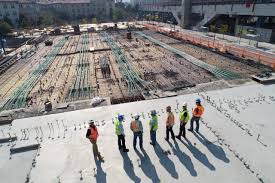Subject Code & Title : BUIL2027 Construction Cost Planning
Weighting : 10%
Assignment Type : Assessment 1
This assessment requires you to develop a Cost Plan using all the skills and knowledge you have acquired throughout the course. You will be using the CostX software package which you should be familiar with from a previous course (BUIL 1028 Quantity Surveying Practice 1) so this assignment builds on the knowledge you have established there.
BUIL2027 Construction Cost Planning Assessment 1 – Australia.

This assessment has three main purposes in relation to this course:
• develop a budget for a residential building using the elemental method of cost planning
• produce a cost plan through computerised methods using Cost X software (educational version)
• undertake a cost analysis of the building and generate summary reports
Students who have undertaken this course previously have stressed that their success in this course was largely dependent on taking an active role in the learning process. Therefore, you are highly encouraged to work systematically through weekly learning activities. The teaching and learning of this course take the approach that we ‘do’ in order to ‘learn’ rather than learning in order to do.
You will be given access to ‘drawings’ and ‘specifications’ relevant to two residential building projects.
• Building Option 1 A – for practice (formative)
• Building Option 2 A – for grading (summative assessment)
Assessment Summary :

Course Objectives :
CO1. evaluate different methods of preparing construction budgets
CO2. apply cost planning techniques and control measures throughout the building process
CO3. evaluate the cost efficiency of designs
CO4. use appropriate computer software for cost planning exercises
CO5. describe the basic principles of life cycle costing
Assessment Description :
Students will create a fully priced Cost Plan for a Residential project. It is important to understand that as this is an initial cost plan based on preliminary drawings there is no actual detailed specification.The drawings and the imported Workbook contain the necessary information on materials and elements.
Download the relevant documents in two folders below (e.g. Drawings, Workbook Template and Project
Rate Library) from course website.
• Building Option 2A – Drawings (Summative Graded)
• Workbook Template and Rate Library
Refer ‘Optional Help Files’ for definitions and guide to measure standards and elements.
Notes:
• Make necessary assumptions for missing rates in the project rate library (state your
assumptions clearly).
• Practice file provides a guide but, students can use appropriate approaches to measure standards and elements based on correct definitions.
You will be building up a progressive master file week by week, but at each step (A-C) submit your
building as a separate distinct file e.g. when you have reached Part A, export a file from Cost X as
“Building Option 2 A Part A. EXF”.At the end of Week 9 you should have one Cost X file called “Building Option 2 A” which will contain all items as per Parts A-C as below:
• Part A: Set up Project Cost X File – ‘Building Option 2 A Part A’ Cost X File
• Part B: Measure and Price Building Elements – ‘Building Option 2 A Part B’ Cost X File
• Part C: Final Cost Plan – ‘Building Option 2 A Part C’ Cost X File and Summary report
Assessment Instructions :
Each of the Assessment Parts are described below to assist you.
Part A :
• Set up the CostX file namely ‘Building Option 2A’
• Creating building and filing building properties
• Adding drawings (name as per the drawing title) into a folder called ‘Preliminary Drawings’,calibrating and filing drawing register of each drawing
• Measure the Standard Areas (FECA, UCA, Building Height, Building Perimeter, Site Area, Site Perimeter and Façade Area) (use POINT MODE to measure in Cost X)
• Measure the individual room areas and external courtyards/decking areas) (measure off the Floor Plan using POINT MODE in Cost X and use a different colour for each room)
• Export the Cost X file and name it ‘Building Option 2A Part A_SURNAME’ and submit
Part B :
You can use ‘Building Option 2 A’ Cost X file or import your existing ‘Building Option 2 A Part A’ Cost X
file.
• Create the dimension groups required for each relevant ELEMENT in accordance with the AIQS standard list of project elements
• Measure the Elemental quantities (for Elements 00-16)
• Price each Building Element in the Work book following each step below.
− Import the Workbook Template into your Cost X program
− Add workbook to your Cost X Building based on default project, Workbook template only
− Live link the quantities in the Dimension Groups to the Workbook
− Import the Project Rate Library file from the course website
− Make the Project Rate Library the default rate library for your project in Cost X
− Using the rate library to price each Building Element in the Workbook
• Export the Cost X file and name it ‘Building Option 2 A Part B_SURNAME’ and submit
BUIL2027 Construction Cost Planning Assessment 1 – Australia.

Part C :
You can use ‘Building Option 2 A’ Cost X file or import your existing ‘Building Option 2A Part B’ Cost X file.
• Measure the Elemental quantities for Services Elements 17 -29 and Site works and External Services Elements 32-44 (where required)
• Refer to the specification notes for allowances for services and external works
• Price all the remaining Elements
• Calculate a Building Cost (you can follow the instructions provided under Practice Building Part E submission)
• In the Workbook add the section (below the line) for Project Allowances and Special provisions
• Calculate preliminaries (you can follow the instructions provided under Practice Building Part E submission)
• Refer the workbook for Allowance Amounts and percentages
• Calculate a Net Project Cost (before Contract Contingency and Fees)
• Calculate a Total (Gross) Project Cost
• Calculate a Total Project Cost to tender date
• Review the Work Book and list the common exclusions.
• Under the heading DOCUMENTS list all the drawings used for this cost planning exercise.
• In the Building Analysis section in the workbook main summary page undertake a Building Cost Analysis
• Live link relevant figures and calculate Perimeter-on-Plan and Wall to Floor Ratio under the heading DESIGN DECISIONS.
• Export the Cost X file and name it ‘Building Option 2 A Part C_SURNAME’ and submit
• You also need to submit below reports under Part C
A Single Page PDF file: Building Elemental Summary – Use the ‘Reports MENU’ option and choose ‘Print Current Sheet to Report’, you can then choose ‘Preview to view the single page report’ of the Elemental
Summary which now has GFA rates as well as Element totals. This preview can then be printed as a Single
Page PDF file naming it in the print dialogue box ‘Building Elemental Summary’.
PDF file: Project summary report – Return to the Main Summary and in the ‘Reports MENU’ choose ‘Print
Workbook to Report’. A selection of report options is available, be careful to choose the option Elemental
Summary Level 1(EN). This will generate a 4-page project summary report which you can print and save as a PDF file naming it ‘Project summary report’.
300 word – Summary report – Write a 300 word summary report that review the Summary with Elemental
GFA rates and identify cost significant elements and discuss these with reference to the learning concepts on Design Economics’ introduced in this course. Discuss the relative proportions of ‘hard’ building costs versus’soft’ project costs (allowances, contingencies, fees etc).
Practice For Assessment 1 :
• In order to practice for completing Assessment 1 tasks, you will be given access to a set of drawings (site and floor plans, sections and elevations) for ‘Building Option 1A’ (8 in total).Complete and submit weekly practice activities and received feedback in order to complete Assessment 1 successfully.
• The practice Building is of similar construction to the ‘Building Option 2 A’ (Assessment building), both being single storey dwellings of similar specification (but different configurations) on identical sites.
BUIL2027 Construction Cost Planning Assessment 1 – Australia.

Guidance Notes :
• Always make a backup copy stored externally.
• Follow the procedures of formative tasks to create the required Dimension groups from the Dimension group list noting that some Dimension groups will not have a quantity but that the Workbook will allow for the calculation of the Element cost based on the quantity and rate.
• Cost X educational version allows a maximum of eight (08) drawings to be loaded for any
Building.
• Cost X does not allow more than four (04) Buildings to be held in the database at any one time
so you may need to delete practice Buildings that are no longer in use when undertaking the
Assessment Building.
• Cost X has an in-program Help file which is accessed top right menu (via a question mark icon).
Excellent Assignment Help
We Aim At:
- Lowest Price.
- 100% Uniqueness.
- Assignment Fastest Delivery.
